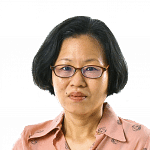The People's Action Party has turned back the pro-opposition tide, demonstrating that its sterling track record and responsiveness to voter anger at the last polls are a winning combination in the face of rising contestation.
The close to 10 percentage point swing in its favour from 2011 also affirms the popularity of Prime Minister Lee Hsien Loong, its general and poster boy, who took a risk by putting himself front and centre of the campaign.
His was the smiling face on PAP posters islandwide.
His was the wefie that voters queued to snap as he walked the ground in Ang Mo Kio GRC and opposition-held Aljunied GRC, which the PAP came close to winning back.
Now that the results are in, it is clear that the boost to Mr Lee's personal standing has been huge.
In his third election as PAP chief, Mr Lee has secured his strongest mandate yet of 69.9 per cent - up from 60.1 per cent in 2011 and 66.6 per cent in 2006.
At the post-result press conference, a smiling Mr Lee described it as a good result for the PAP and an excellent one for Singapore, with strong support from voters across all ages and races.
But in the lead-up to these polls, the outlook for the PAP was hazy. Some said the best the party could hope for was to slow a steady decline in electoral support amid a changed political landscape dubbed "the new normal".
The election's timing was seen as opportunistic, an attempt to ride on patriotic fervour stirred by the death of Mr Lee Kuan Yew in March and celebrations of the nation's Golden Jubilee.
Earlier this week, the Economist Intelligence Unit forecast that "the patriotic fervour that the party seems to be relying on is not likely to boost its vote share by much".
So how did PM Lee and his team in white pull off the improbable?
First, it could be that one of the biggest political transformations of the last four years was also the least visible, and had at its centre not the Workers' Party - on which many eyes were focused - but the PAP.
Think back to the watershed general election of May 2011. The PAP embarked on some serious soul-searching in the wake of its shock loss of Aljunied GRC and three office holders, including then-Foreign Minister George Yeo.
Six months after that, in November 2011, Mr Lee pledged at the party's convention a "new PAP for a new era". This new PAP would correct policy shortcomings, like in housing, and do more to take care of not just the elderly and the needy, but also the middle-income group.
It would overhaul its outreach strategy and consult Singaporeans more actively. Within the party, decision-making would be more decentralised. Activists and MPs would be more empowered to reflect people's views, while ministers would have to work harder to build political support for tough policies.
The party would also become more "tactical" - by tracking and countering opposition moves on all fronts.
Since then, policy change in areas such as housing and the Government's much-touted shift to the left have made headlines.
But changes in how the PAP reaches out to residents on the ground have taken place more quietly, yet they are no less important. Suffice it to say that many voters now find the men and women in white less arrogant and more willing to listen than before.
As secretary-general, Mr Lee deserves credit for leading this renewal of a 60-year-old party that had been at risk of losing its connection with voters.
It is striking that in this campaign, PM Lee has appealed directly to voters to "please support me and my team". Leadership renewal, he said, was the most important issue, not doing more or spending more as some might like voters to believe.
At a lunchtime rally midway through the campaign, Mr Lee said the nucleus of the PAP's fourth-generation leadership was "starting to come together, but I need more, you need more, Singapore needs more".
As it turns out, Singaporeans agree. In their view, the PAP under Mr Lee remains by far the best team to take the country forward. They have given him a very strong mandate and another five years to test and train his team of leaders who must govern in a new era of growing political competition.
Now, with his hand strengthened, what direction does PM Lee intend to lead his party in?
He gave an indication at his press conference early this morning, reminding his team of MPs that they have been elected to serve the people, that they are trustees and stewards who must take care of Singapore - and account for their performance at the next polls.
On the desire for more diverse voices, the PAP Government has been engaging Singaporeans directly and will redouble its efforts, he said, while preserving unique strengths, including an ability to contain populist pressure while responding to popular needs.
Large swings in support from one election to the next are perhaps a new norm, depending on how voters assess the PAP's performance in the previous term. That Mr Lee chose to highlight to his team the need to face voters every five years is a clear signal to them that in the new PAP, there is no room for complacency.

